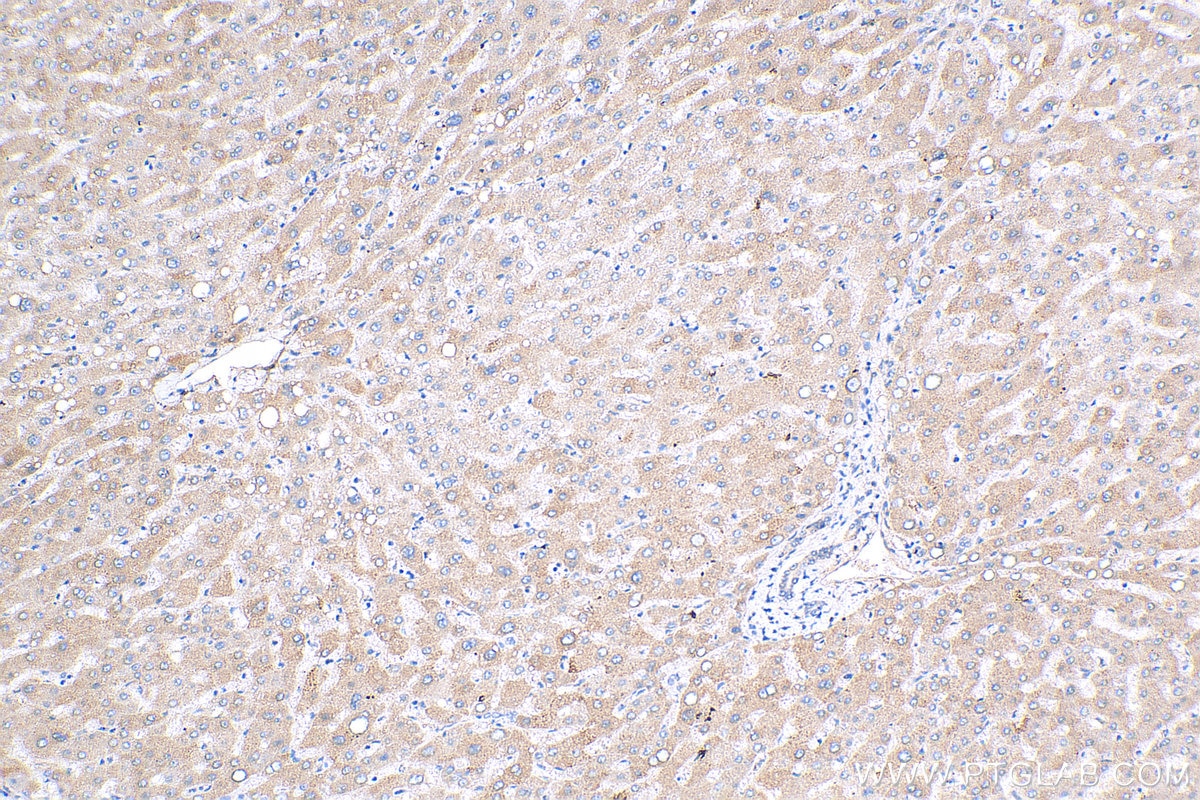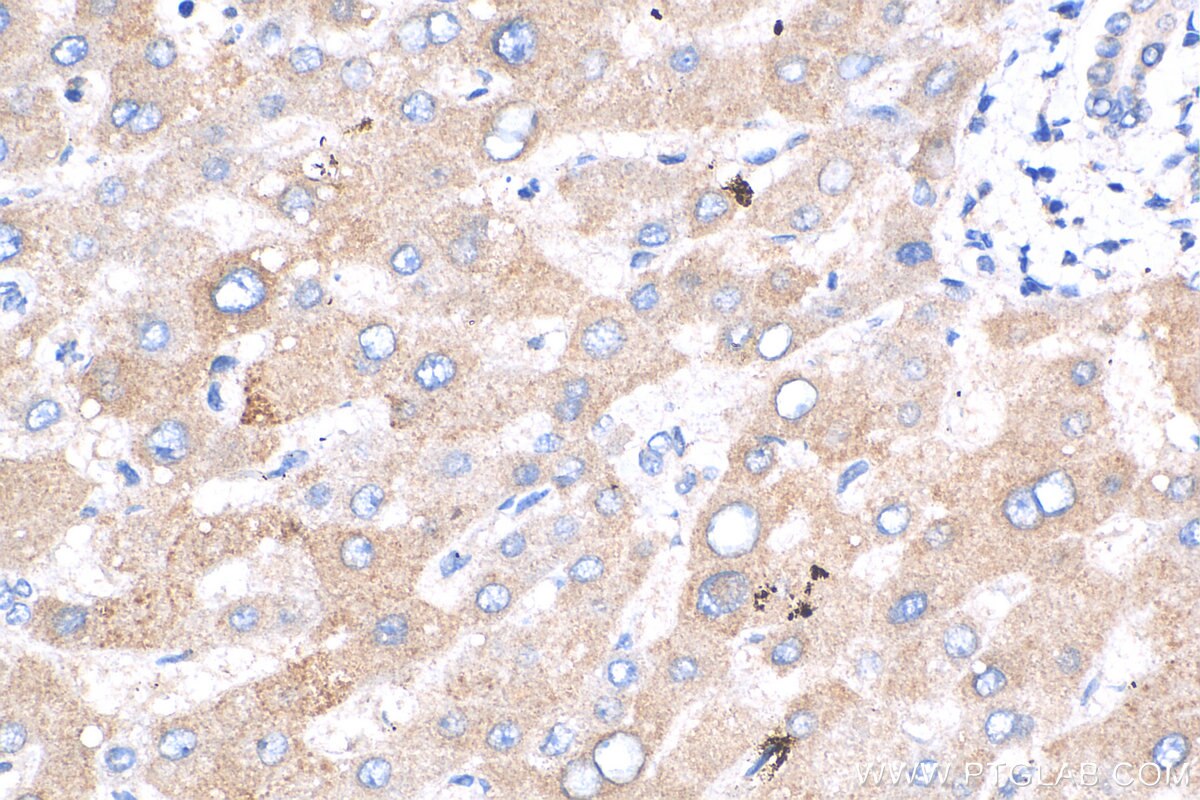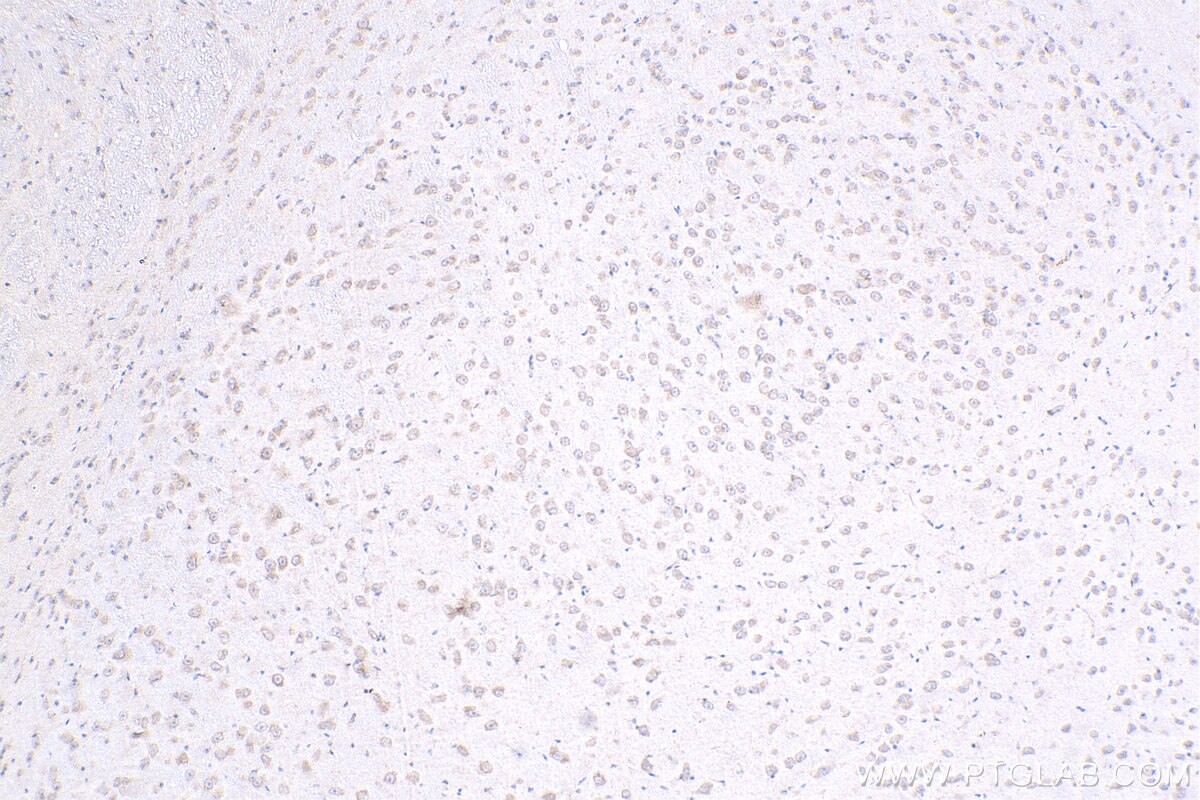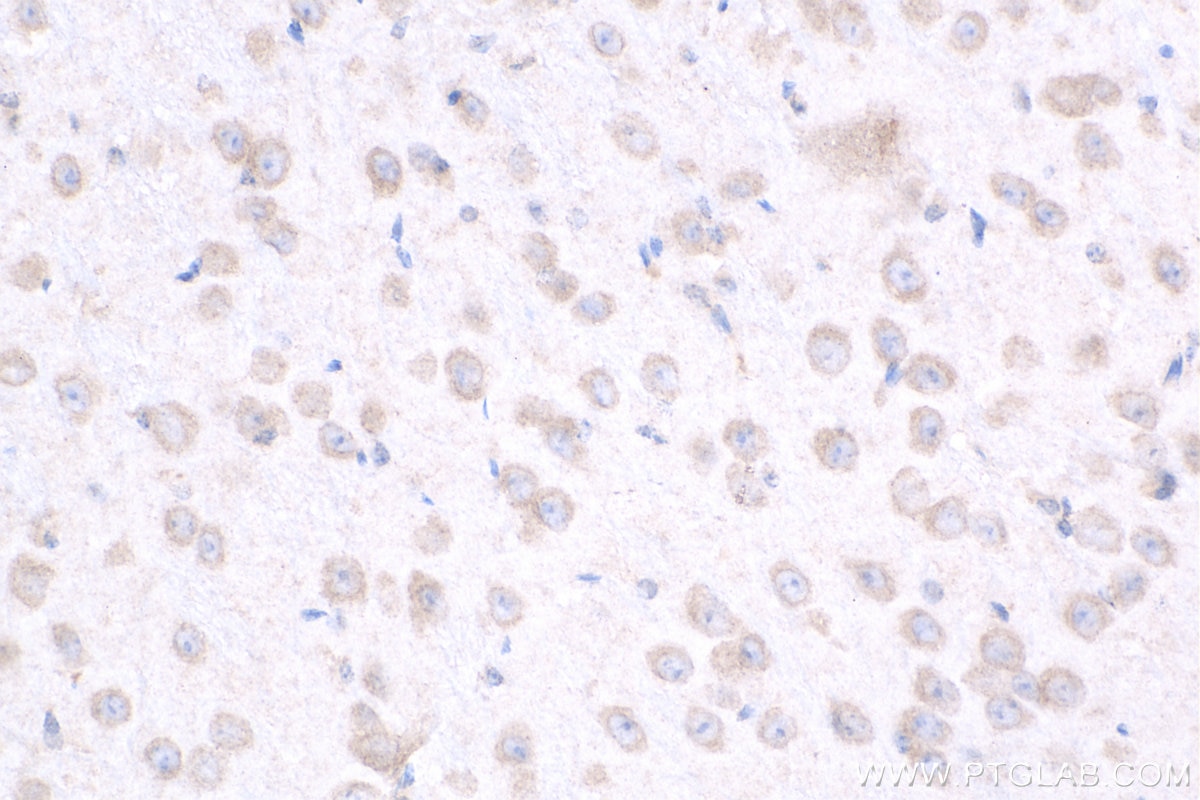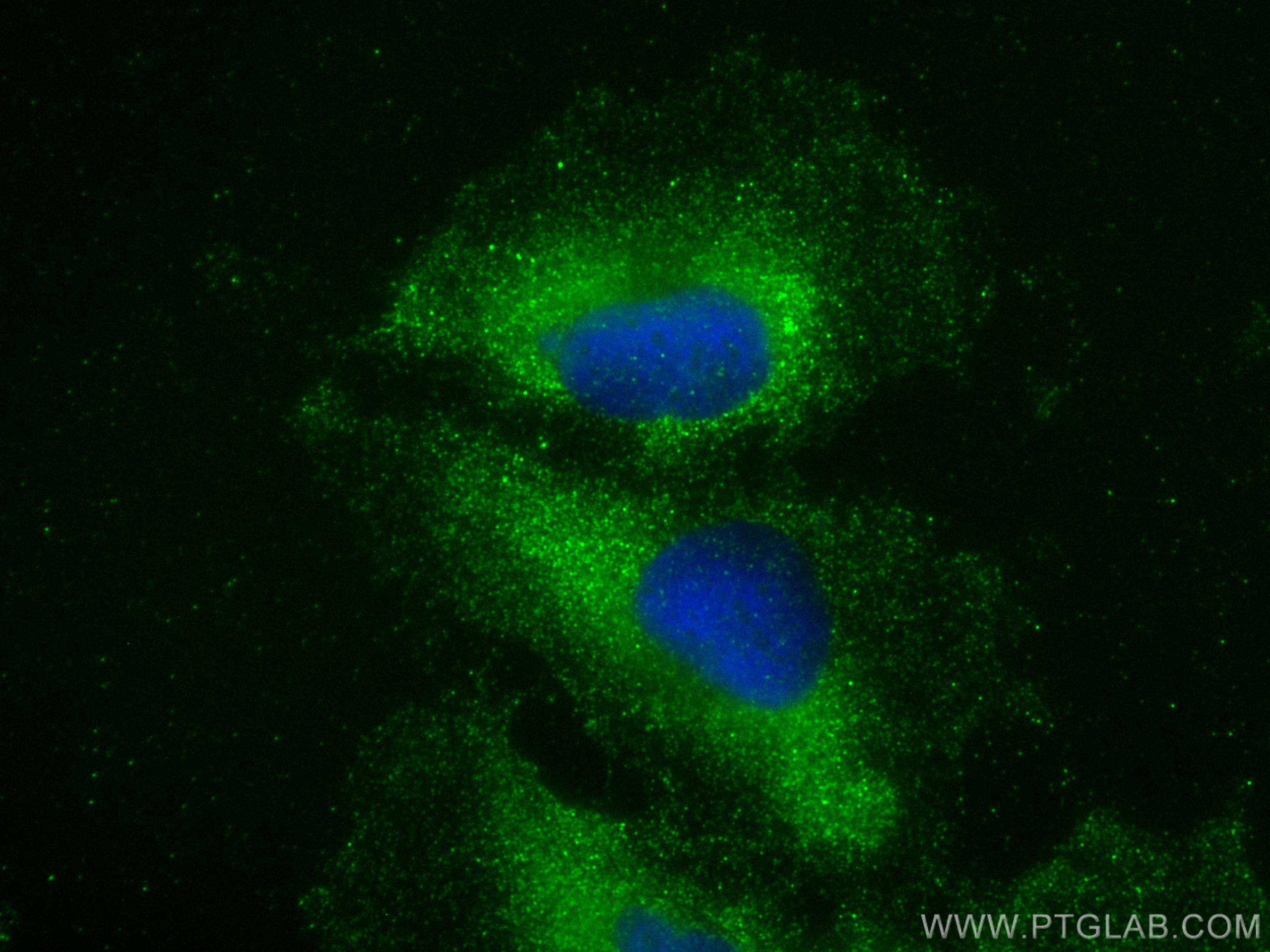Tested Applications
| Positive IHC detected in | human liver tissue, mouse brain tissue Note: suggested antigen retrieval with TE buffer pH 9.0; (*) Alternatively, antigen retrieval may be performed with citrate buffer pH 6.0 |
| Positive IF/ICC detected in | U-251 cells |
Recommended dilution
| Application | Dilution |
|---|---|
| Immunohistochemistry (IHC) | IHC : 1:50-1:500 |
| Immunofluorescence (IF)/ICC | IF/ICC : 1:200-1:800 |
| It is recommended that this reagent should be titrated in each testing system to obtain optimal results. | |
| Sample-dependent, Check data in validation data gallery. | |
Product Information
24755-1-AP targets ZNF573 in IHC, IF/ICC, ELISA applications and shows reactivity with human, mouse samples.
| Tested Reactivity | human, mouse |
| Host / Isotype | Rabbit / IgG |
| Class | Polyclonal |
| Type | Antibody |
| Immunogen |
CatNo: Ag20475 Product name: Recombinant human ZNF573 protein Source: e coli.-derived, PGEX-4T Tag: GST Domain: 55-150 aa of BC042170 Sequence: PVVVDLLERGKEPWMILREETQFTDLDLQCEIISYIEVPTYETDISSTQLQSIYKREKLYECKKCQKKFSSGYQLILHHRFHVIERPYECKECGKN Predict reactive species |
| Full Name | zinc finger protein 573 |
| Calculated Molecular Weight | 645 aa, 76 kDa |
| GenBank Accession Number | BC042170 |
| Gene Symbol | ZNF573 |
| Gene ID (NCBI) | 126231 |
| RRID | AB_3085753 |
| Conjugate | Unconjugated |
| Form | Liquid |
| Purification Method | Antigen affinity purification |
| UNIPROT ID | Q86YE8 |
| Storage Buffer | PBS with 0.02% sodium azide and 50% glycerol, pH 7.3. |
| Storage Conditions | Store at -20°C. Stable for one year after shipment. Aliquoting is unnecessary for -20oC storage. 20ul sizes contain 0.1% BSA. |
Background Information
ZNF573 belongs to the krueppel C2H2-type zinc-finger protein family. ZNF573 is involved in a broad range of biological functions including apoptosis, protein structure, DNA recognition, and RNA transcription, the structural variation in ZNF573 protein may result in the abnormal growth and development of human lens, further leading to the occurrence of cataracts.
Protocols
| Product Specific Protocols | |
|---|---|
| IF protocol for ZNF573 antibody 24755-1-AP | Download protocol |
| IHC protocol for ZNF573 antibody 24755-1-AP | Download protocol |
| Standard Protocols | |
|---|---|
| Click here to view our Standard Protocols |

